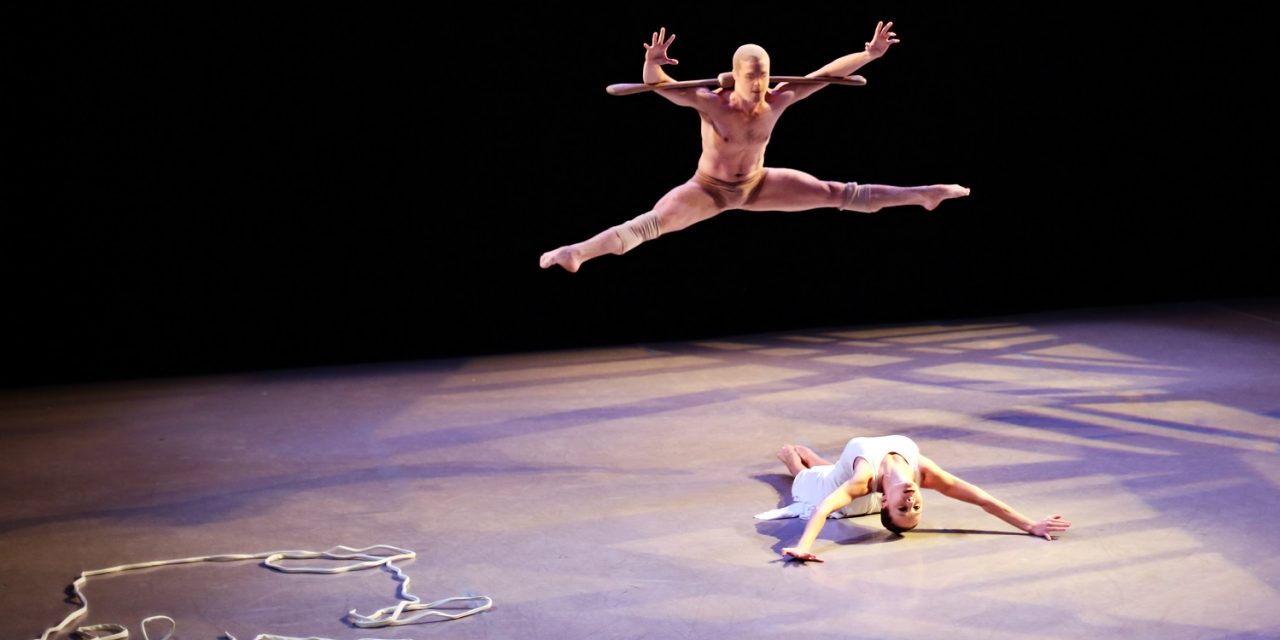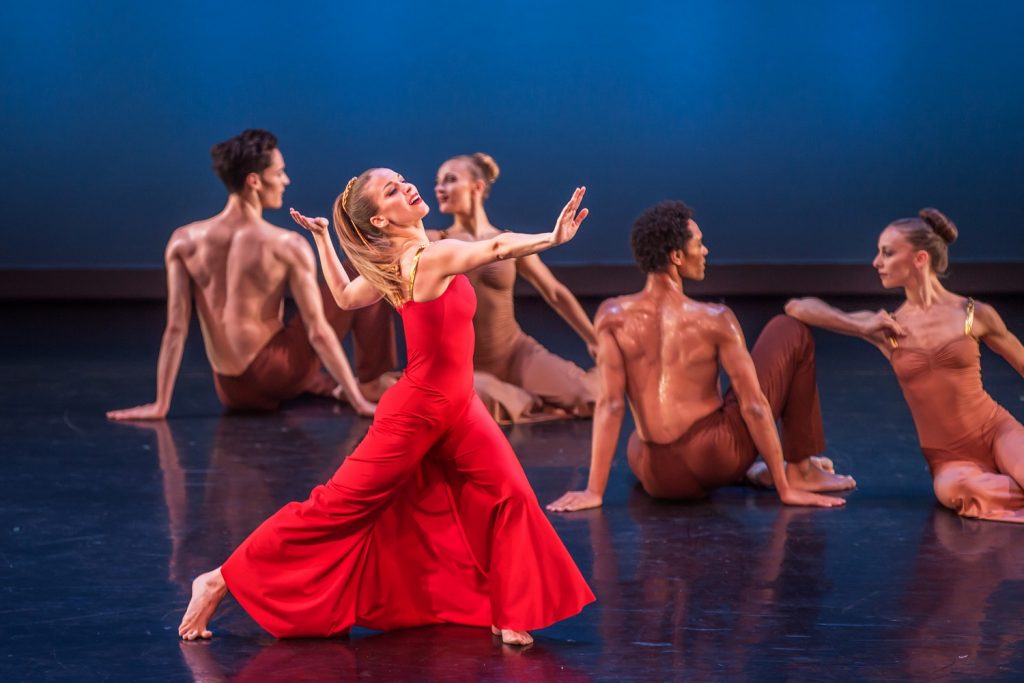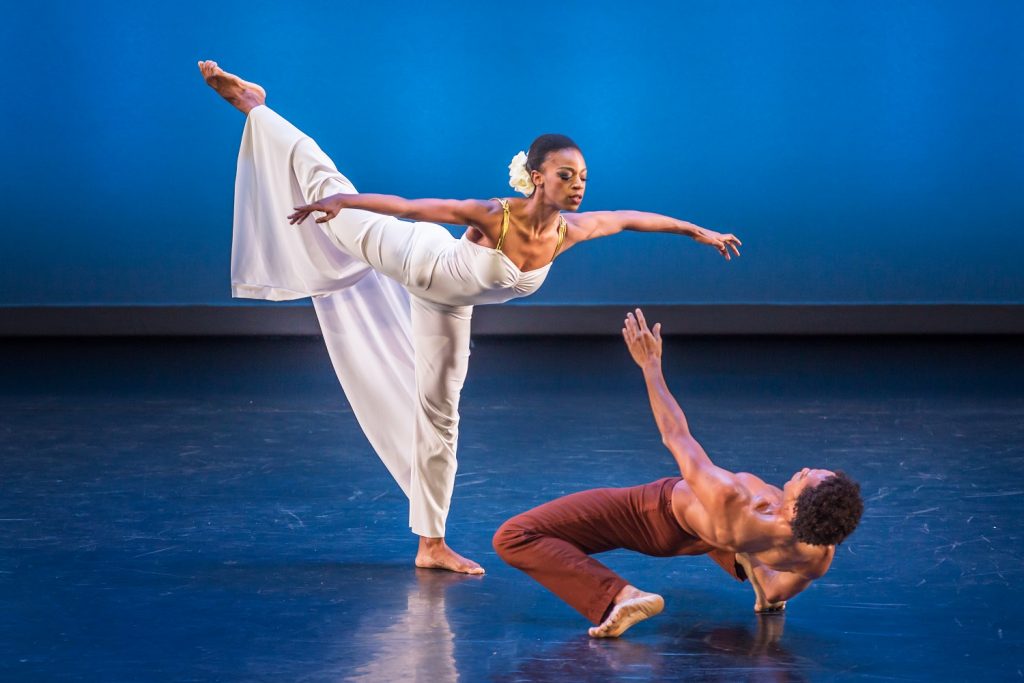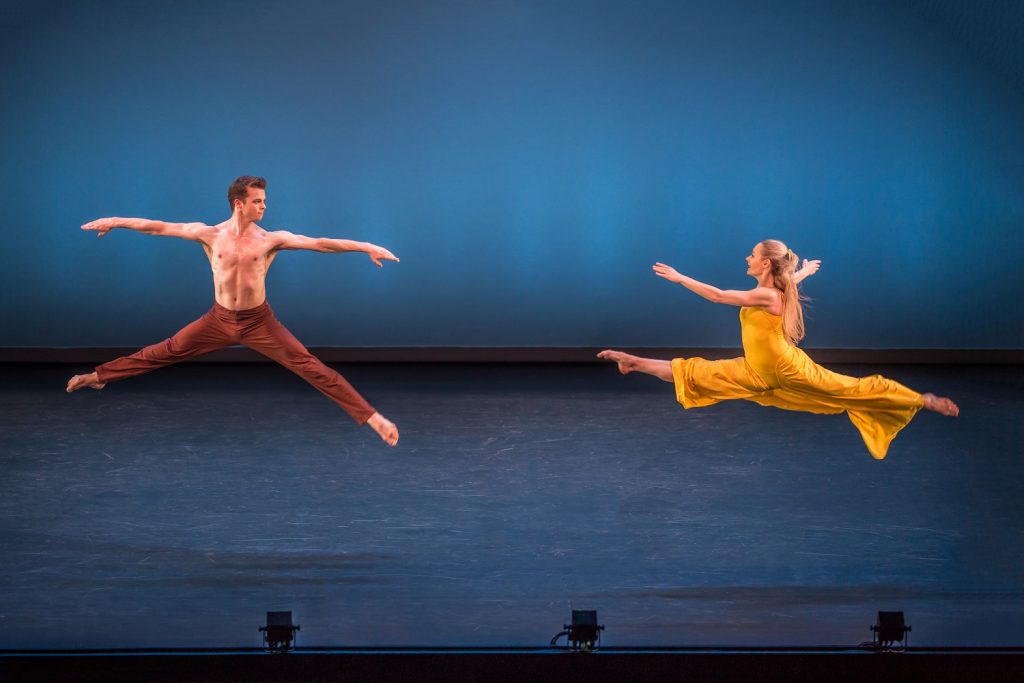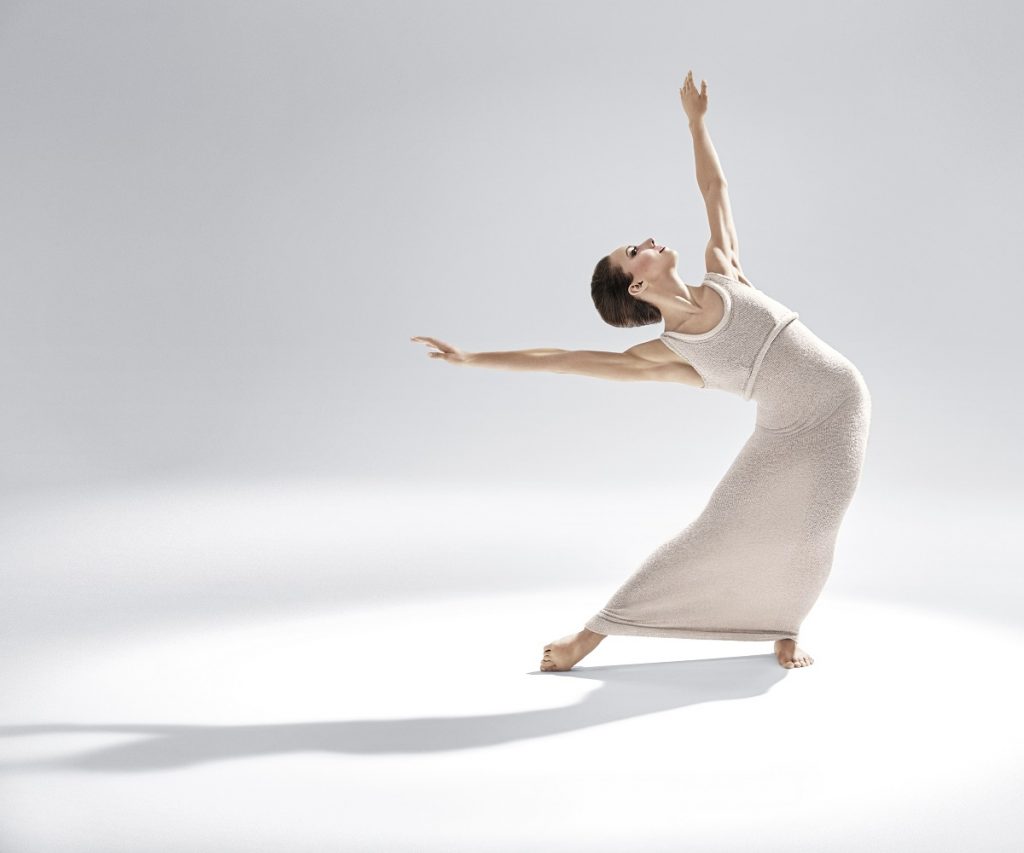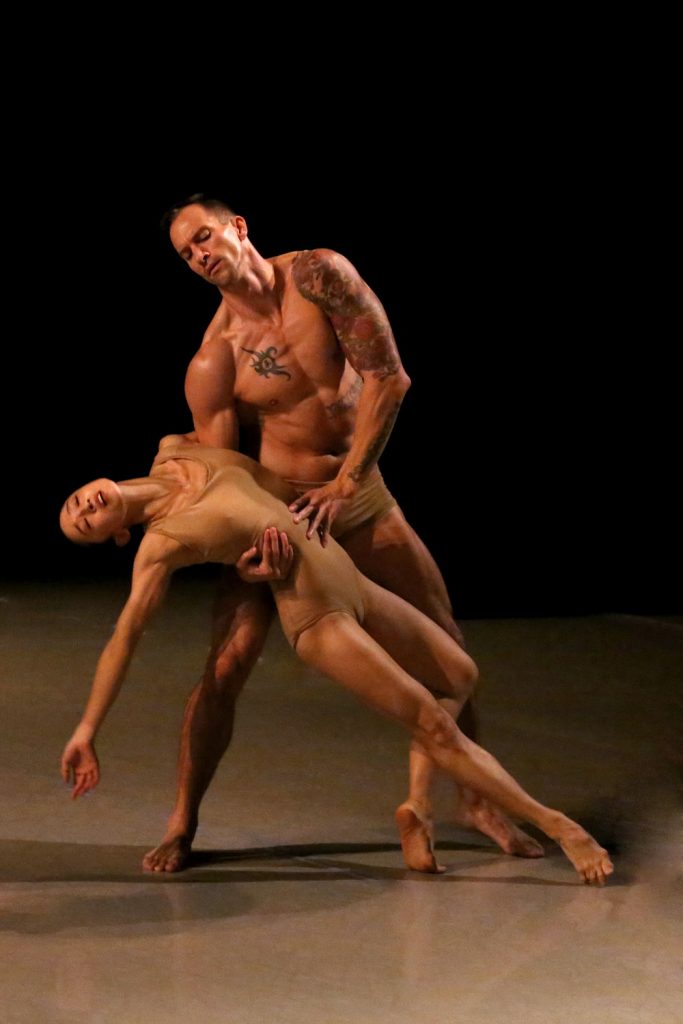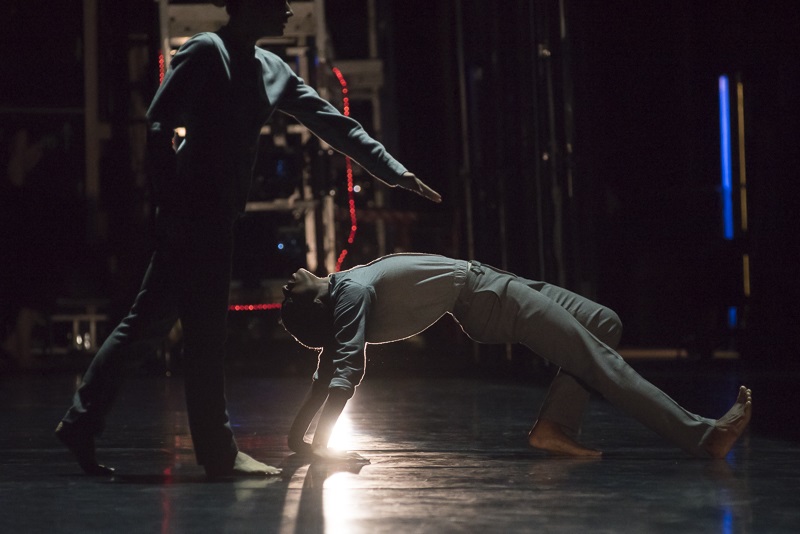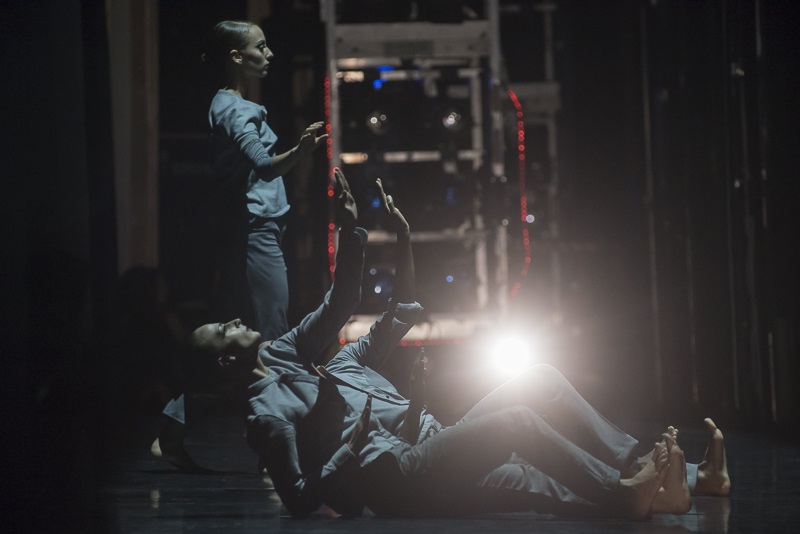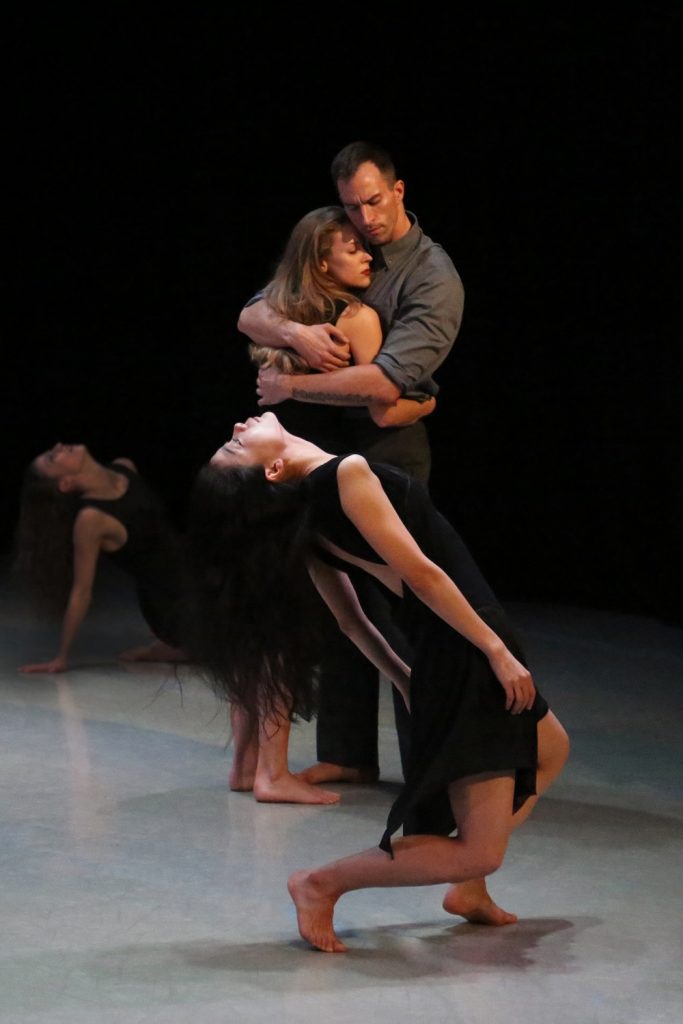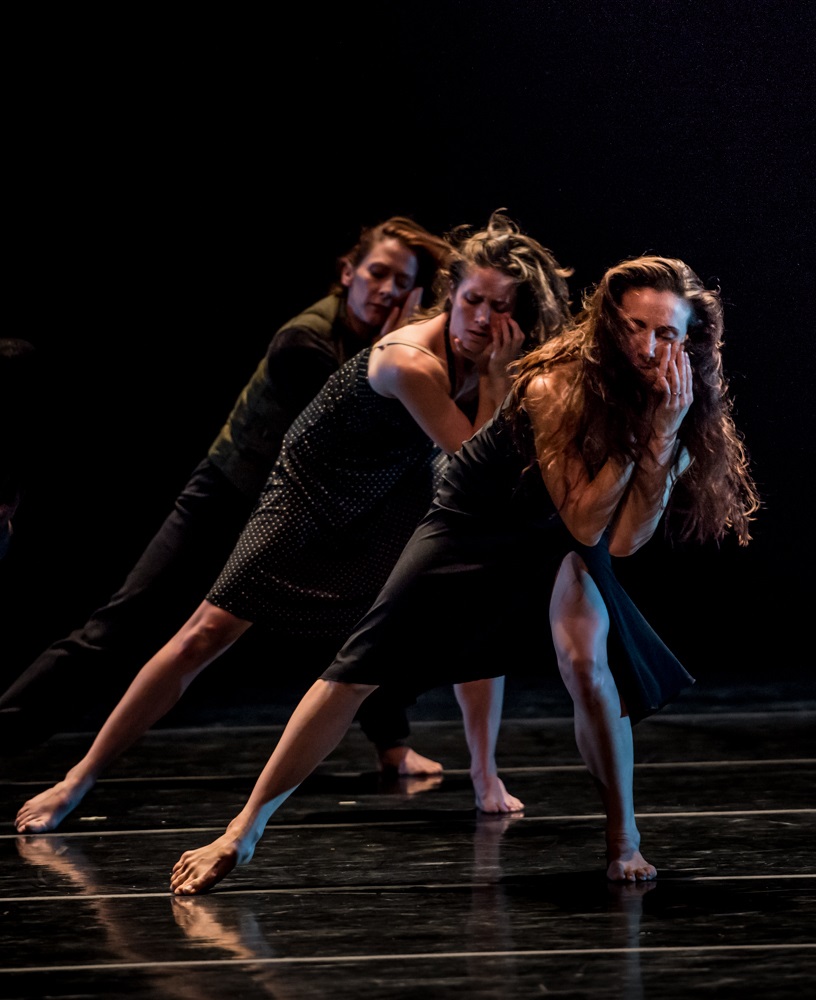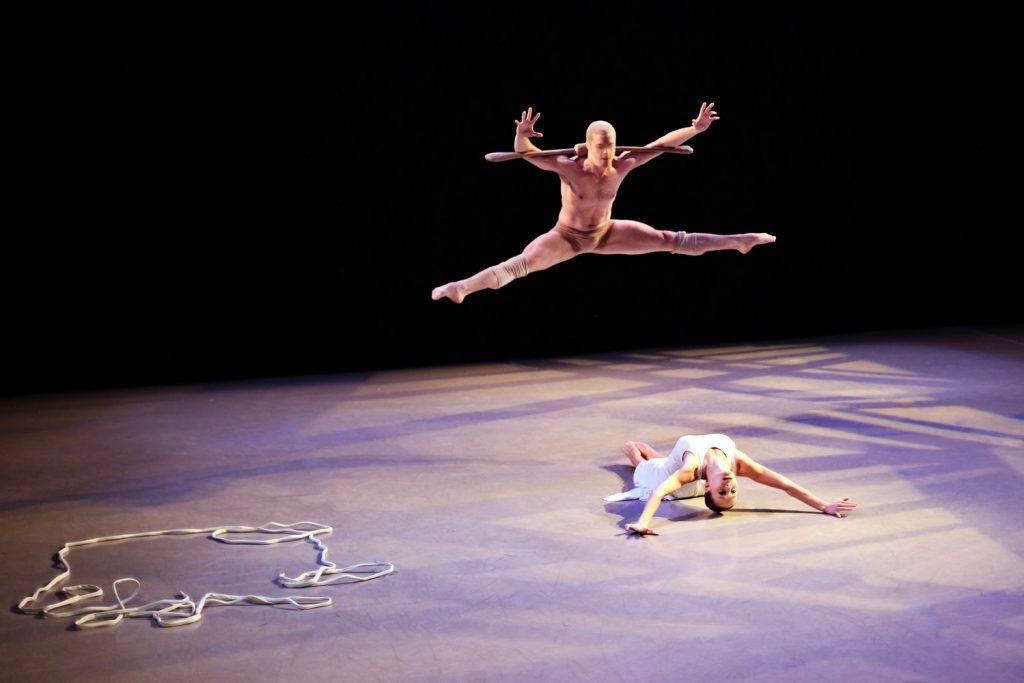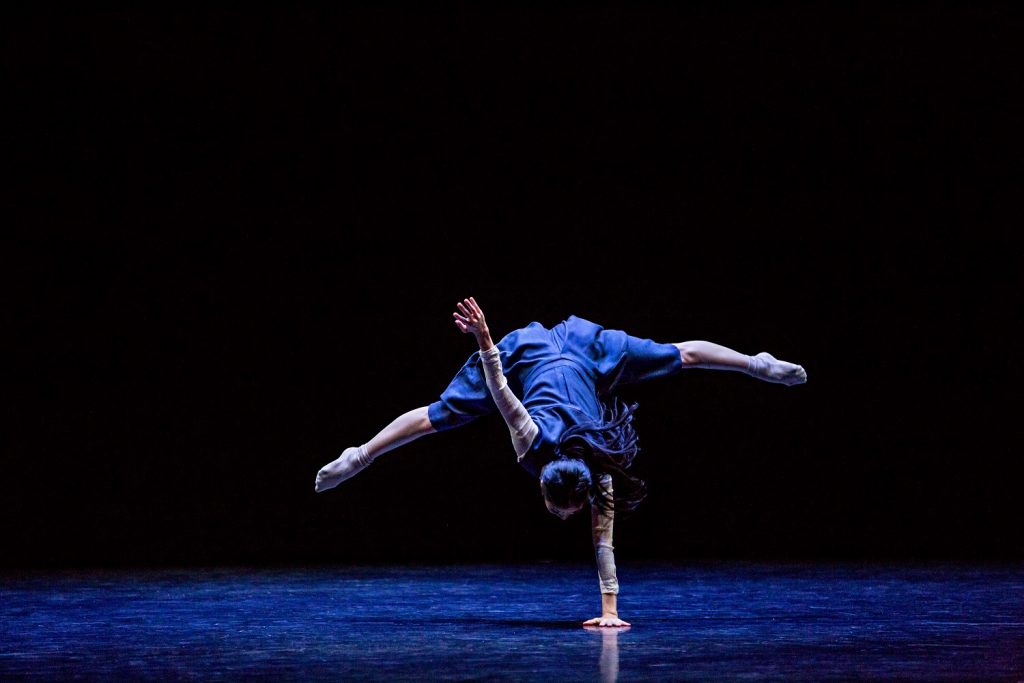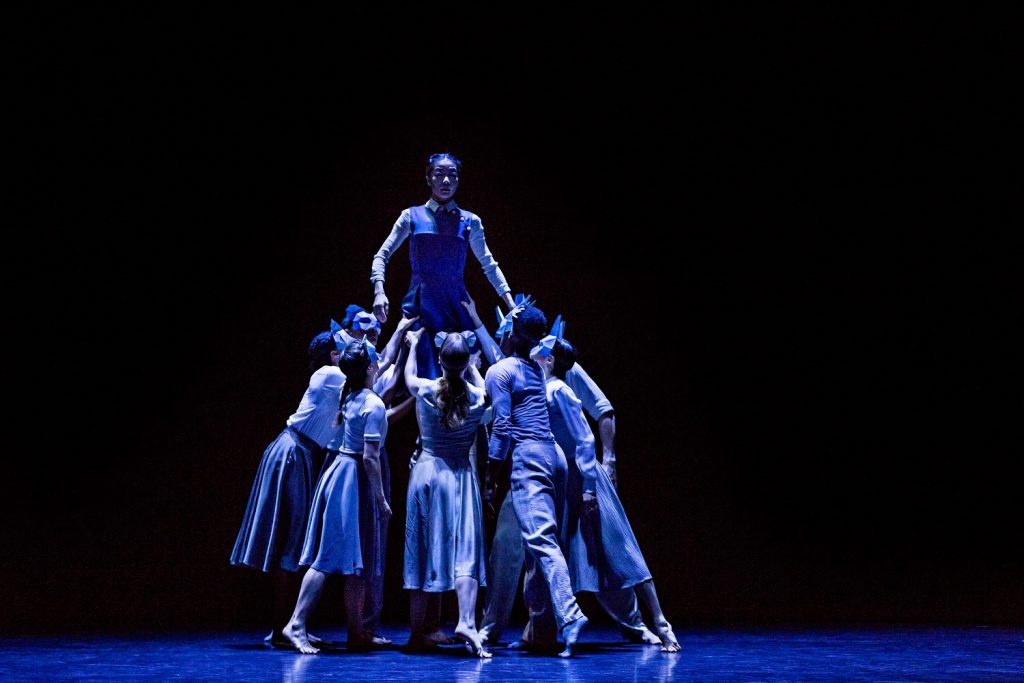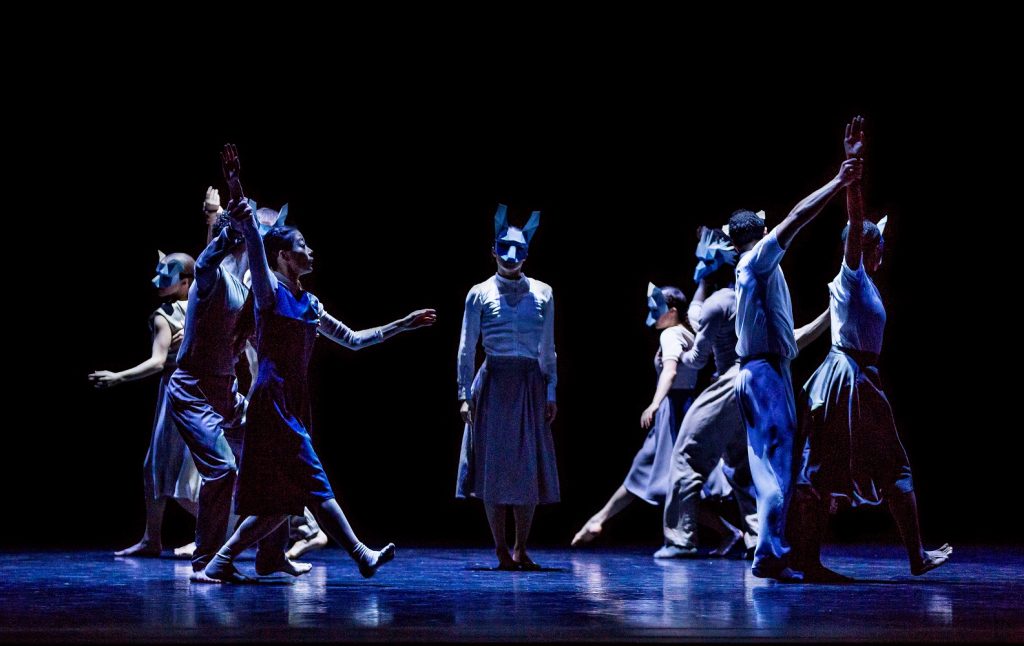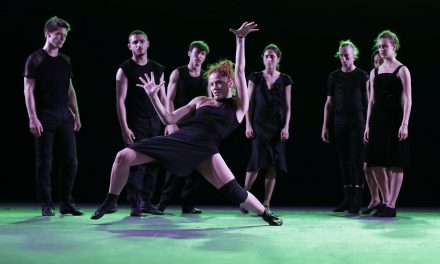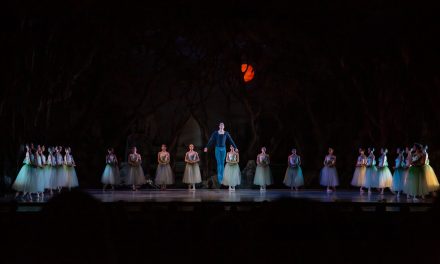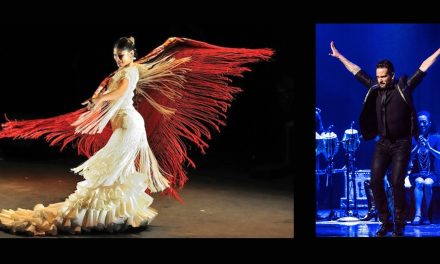The Martha Graham Dance Company graced the Irvine Barclay Theatre stage on Wednesday, February 27, 2019, demonstrating once again why many have bequeathed Graham with the title “The Mother of Modern Dance”. The program was titled The Eve Project in celebration of Women and the 100th Anniversary of the 19th Amendment which gave women the right to vote. The performances were stunning, and the company appeared in excellent form under the leadership of former company member and Artistic Director Janet Eilber.
This is the 93rd season for the Martha Graham Dance Company, making it the oldest dance company in America. Graham continued to choreograph well into her nineties, passing away in April of 1991 at the age of 97. For this performance, the company presented three works by Martha Graham, one work by Pontus Lidberg and the fifth one conceived by Eilber, with choreography by Bulareyaung Pagarlava, Nicolas Paul, and Larry Keigwin.
During her opening speech, Eilber told the audience that Diversion of Angels was about love; mature love (white), passionate love (red) and adolescent love (yellow). She informed us that Graham said that these might represent three separate women or the different romantic experiences of one woman.
It was in this work that I recognized movements that were the origins of certain signature movements by Paul Taylor and Merce Cunningham who performed with the Graham company before forming their own. Graham’s arm and hip movements; her small running leaps with the torso and arms swinging from side to side, and the cupping of her hands. They all made appearances in these men’s works. They did not copy their mentor, but each was influenced by her movement vocabulary. From Graham to present day contemporary dance, the lineage can be clearly drawn.
Unlike many of her works, Diversion of Angels is without a storyline or narrative. It is, in dancer terms, very “dancey” and looks like it would be fun to perform. For this performance, The Couple in White was performed by the elegant and statuesque Leslie Andrea Williams wearing a long white dress, and her wonderful partner Lorenzo Pagano costumed in earth tones. Their duet expressed a love that was no longer driven by passion, but by a deep respect for one another.
The Couple in Red was performed by the flirtatious Anne O’Donnell and Lloyd Mayor. O’Donnell was seen crossing the stage repeatedly performing one of Graham’s signature moves, long and sustained tilts with a high leg extension that ends with Graham’s iconic contraction. The Couple in Yellow was performed by Laurel Dalley Smith and Jacob Larsen. Here too, Smith was seen crossing the stage but in a more playful manner. These two duets, although brief, beautifully portrayed the emotions and expressions of love that Graham intended.
There were five other women who moved in and around the work like a Greek chorus and a beautiful men’s quartet with a short phrase performed first in canon along a diagonal, transitioning into a circle and ended in unison with Williams standing regally within. The entire dance was designed with the dancers slightly off center and moving in a multitude of geometrical patterns. The very talented cast of Diversions of Angels not previously mentioned were So Young An, Charlotte Landreau, Marzia Memoli, Anne Souder, and Alessio Crognale. The very open and flattering lighting was by Jean Rosenthal as adapted by Beverly Emmons, and the music was by composer Norman Dello Joio.
Graham said in a 1980 interview of Ekstasis that “the genesis of this dance came from a pelvic thrust gesture that she discovered one day. It led her to explore “a cycle of distortion” that she found deeply meaningful.” Eilber explained that this was a pivotal movement for Graham because the movement she discovered greatly influenced the work that she went on to create.
The beginning of the solo, performed with stunning control by Natasha M. Diamond-Walker, began and ended center stage. Costumed in a form-fitting, floor length white dress made of stretchable material, Diamond-Walker’s sensual isolations of her hips, shoulders and torso as she quietly moved in place showered upon by a shocking blue/white special, pulled the audience in and never let them go. The performer eventually moves out of the single light and into a warmer tone, but the movement remains quiet and constrained, yet alluring. Like a moth to a flame, Diamond-Walker returns to the mystery of her original light. The dynamic and sensual lighting was designed by Nick Hung and the costumes were by Martha Graham.
Lamentation was one of Graham’s famous solos, choreographed in 1930 to Op. 3, No. 2 by Hungarian composer, ethnomusicologist, pedagogue, linguist, and philosopher Zoltán Kodály. To commemorate the anniversary of 9/11, Janet Eilber invited several choreographers to create what is now titled Lamentation Variations based on a film from the early 1940s of Graham performing Lamentation. Eilber told me later that there are currently 15 such variations. We got to see that film and to hear Graham’s own words describing the work and its effect on one woman who stated that Graham’s Lamentation taught her that grieving was honorable and necessary.
There were three extremely powerful and heart wrenching short works presented as Lamentation Variations. The first, Pagarlava Variation, was a quartet for three men (Jacob Larsen, Lorenzo Pagano, Ben Schultz) and one woman (So Young An), all dressed in flesh tones. The mood was solemn and laced with beautiful lifts and a tableau that spoke directly to different positions held by Graham during Lamentation. The movement never left its quiet center and ended with the men solemnly walking as they held An upside down in the symbol that has become so recognizable, the cross produced among the debris where the Twin Towers once stood.
Paul Variation was a haunting work. Three women (Marzia Memoli, Anne Souder, Leslie Andrea Williams) traveled up and down stage within their isolated corridors. Although in close proximity, the three never met and only briefly moved in a floor phrase that felt wrought with restrained agony. The piece evoked an internal dialogue that must have been experienced by all the victims of the 9/11 tragedy. The bleak and separating lighting was designed by Yi-Chung Chen and the simple but elegant costumes were by Jennifer O’Donnell.
The entire Graham company cast performed in Keigwin Variation, filled primarily with gestures and expressions that we had witnessed Graham perform in Lamentation: fingers scanning over cheek bones; faces raised toward heaven in gaping, silent screams; twisted limbs; rocking back and forth; hands clasped in prayer, to list a few. Keigwin took these movements and transplanted them into the private terror of the surviving relatives of those who died. Solo depicted private sufferings of loss, with brief encounters evoking memories of their loved ones. A husband took his wife into his arms only to have her slip from his grasp into death. The hauntingly romantic music was by Frédéric Chopin and the costumes that represented the people of 9/11 were by Jennifer O’Donnell.
Lamentation Variations was emotionally exhausting and the only way one could have escaped these feelings would have involved leaving the theater.
Errand into the Maze (1947) was an example of Graham’s mythology period. It was to music by Gian Carlo Menotti and Graham loosely based it on the myth of Theseus, who travels into the labyrinth to confront the half man/half beast Minotaur. Here, Theseus was a woman (Charlotte Landreau) dressed all in white. The maze was depicted by a narrow rope laid out in a simple backwards L shape and a wooden yoke-like bar was worn by the Minotaur (Lloyd Mayor). Graham shows Theseus’ journey through the maze, designed by Isamu Noguchi by crisscrossing steps along the rope and later having her gather it up to represent an invisible barrier.
Mayor’s performance of the Minotaur was striking and Graham’s choreography for the creature was physically challenging. Errand into the Maze was not one of my favorite works of Graham’s but perhaps it suffers now because it is appears terribly dated, like looking at a work of art in a museum. The cavern-like lighting was by Lauren Libretti and costumes were by Maria Garcia. As in many of Graham’s works, the woman was costumed in a white dress that covered her from neck to ankles, while the man wore only tight briefs.
The final work, titled Woodland was created by Swedish choreographer, filmmaker and dancer Pontus Lidberg. The work was saturated with lovely movements and patterns, subtle humor and delicious dancing, but it left me wanting. Choreographed to music by American composer Irving Fine, a line of dancers dressed in different shades of gray designed by Reid Bartelme and Harriet Jung, ushered in principal dancer Xin Ying. She is a beautiful performer who alternates between dancing with her colleagues and walking amongst them emoting an interest in their actions. One section has all but Ying donning woodland creature masks designed by Wintercroft Designs. I saw no reason for these masks other than to visualize the dance’s title, and as predicted, they were soon discarded and never referred to again. The work ended as it began, but in reverse; the line absorbing Ying and sweeping her offstage.
Lidberg’s movement was lovely and his designs often reminiscent of George Balanchine, certainly a good choreographer to be inspired by. Had he stuck to a non-narrative movement theme and not tried to place a reason or purpose on top of the work, perhaps it would have been more memorable.
It was a joy to see the Martha Graham Dance Company perform and brava to Janet Eilber for how she has nurtured and breathed sustaining life into the treasured legacy of our “Mother of Modern Dance”, Martha Graham.
For more information about The Martha Graham Dance Company, click here.
For information on the Irvine Barclay Theatre, click here.
Featured image: Photo of Lloyd Mayor and Charlotte Landreau in Martha Graham’s Errand into the Maze by Melissa Sherwood.

